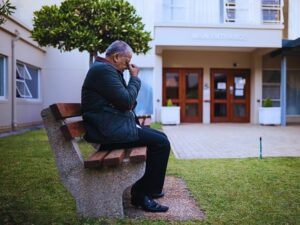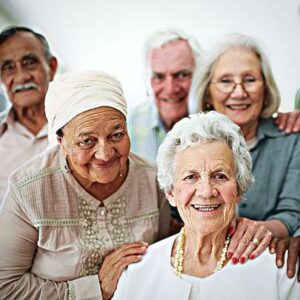Illinois nursing homes were especially hard-hit during the first wave of the coronavirus pandemic, and a new outbreak has been ongoing during the fall. While the government has taken proactive measures to try to prevent the spread of COVID-19 in nursing homes, cases have quadrupled since the beginning of June. Part of the problem is that staff and visitors are bringing COVID-19 into the facilities with them, causing residents to contract the disease. Since elderly people are especially vulnerable to the coronavirus, deaths have also been rising. Nursing homes need to take proactive measures to try to prevent the spread of the novel coronavirus in their facilities so that the residents can be kept safe.

Outbreaks of Coronavirus in Nursing Homes
Since the beginning of the pandemic, more than 62,000 COVID-19 cases have occurred in Illinois nursing homes. Out of the residents who have contracted the disease, nearly 8,000 have died. While the federal government has allocated billions of dollars to nursing homes to try to prevent the spread of the virus, it has been combined by a push to reopen the broader community. Combining reopening measures for businesses with an attempt to insulate nursing homes does little to stop the spread of the virus amongst residents. Nursing home staff and visitors both introduce the virus to nursing facilities, causing outbreaks to happen.
Nursing homes have faced several problems that facilitated the introduction and spread of COVID-19 in their facilities. Many homes are short-staffed and do not have sufficient personnel to attend to their residents. They may also have shortages of personal protective equipment, including masks, gowns, and gloves. Some nursing facilities also do not follow proper infection control measures and have lax visitation policies. All of these issues can lead to the introduction of COVID-19 into nursing facilities where it can rapidly spread among vulnerable residents.
While the summer months brought a slight decrease in coronavirus cases in the community and in nursing facilities, the fall months have been accompanied by a new surge of coronavirus in the community-at-large and in nursing homes. Nursing homes should take several steps to try to prevent outbreaks from occurring.
Preventative Measures to Stop COVID-19
Nursing home staff should wear masks at all times within nursing homes and while they are out in public and off from work. Proper hand hygiene should be observed at all times. Nursing staff who show any symptoms, including fevers, headaches, or respiratory symptoms, should not report for work. Nursing homes should provide leave to nursing home staff who feel ill so that they do not report to work when they are sick. Staff members should not face any job repercussions for remaining at home when they are feeling ill.
Nursing homes should consider conducting regular testing of all staff and residents. This can help to identify workers and residents who are positive for the virus and who can spread it even if they are asymptomatic. Any positive tests should be promptly reported to the health department. Staff members who test positive should follow the health department’s quarantine and isolation protocols before they are allowed to return to work.
Residents who test positive for the coronavirus should be kept separate from other residents. Nursing homes should have dedicated staff members who work in rooms with positive patients. These staff members should not work with any other residents during their shifts to keep them from transporting the virus to others in the facility. The rooms where COVID-19 patients stay should be thoroughly disinfected and cleaned throughout the day.
As soon as a resident tests positive for COVID-19, the nursing home should be in communication with his or her doctor. The patient’s oxygen levels and symptoms should be monitored, and the home should strictly adhere to all of the medical advice given by the doctor. Residents should be transported to the hospital for prompt treatment if they start to show worsening symptoms.
Nursing homes should have good ventilation systems installed and house residents with coronavirus in areas with separate ventilation from the rest of the facility. They should also be careful with visitation policies. If visitors are allowed, they should be properly screened. Mask-wearing should be mandatory at all times for visitors. To help to keep residents safe, nursing homes should encourage regular virtual visitation with the residents’ loved ones by helping them to access video visits through FaceTime, Zoom, or other providers.
The news that vaccines are arriving for nursing home staff and residents is encouraging. However, following proper safety measures should be ongoing to prevent COVID-19 outbreaks. Nursing home residents are among the most vulnerable populations at risk for serious disease when they contract COVID-19. When nursing homes fail to properly follow safety protocols, more residents are at risk of dying from the novel coronavirus.







